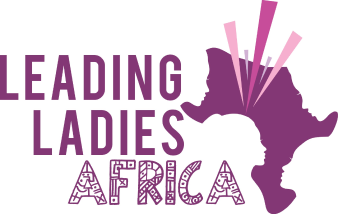The first time I attended a real estate investing conference, I was shocked and pleasantly surprised to find absolutely no line for the women’s restroom during break time. As I washed my hands in peace in the mostly empty restroom, I started to wonder why this was. Where were all the women?

It turns out that, while there are many female real estate agents, there are relatively few female real estate investors, which mirrors the gender disparity in stock market investing. According to a 2018 study by Fidelity Investments, only 29% of women see themselves as investors, and less than one in four women are comfortable with their knowledge of investing.
As a female real estate investor myself, I completely understand. The investing world, whether it’s stocks or real estate, can be an intimidating place full of jargon. But the fact of the matter is, lack of action and fear of investing cost women dearly.
While most people are aware of the wage gap, few are aware of the investing gap, which can cost women $1 million or more over the course of their lifetimes. This disparity is even more pronounced given that women tend to live longer than men and incur greater healthcare costs in retirement.
By keeping more of their money in savings accounts rather than investing it, women are missing out on substantial opportunities to build wealth for themselves and their families, which is amplified even further when taking into account the power of compounding and the tax advantages of investing in real estate.
Take, for example, an investment in a single-family rental property. Let’s say that, by age 25, you were able to save up $25,000 and decided to invest that money into a $100,000 rental property. Your mortgage payments would be about $500 per month over the course of 30 years.
Assuming you’re able to rent out the home for $800 per month, you would make about $3,600 per year (before taxes, insurance and other expenses).
Over the course of the next 30 years, that’s over $100,000, just in rental income. If you were to then sell that property, you would get your original $25,000 investment back, plus the additional $75,000 that you paid off over those 30 years via the monthly mortgage payments, plus the amount the property value appreciated over that period of time. If the property had appreciated an average of 3% per year over the 30 years, that means you would be able to sell the property for over $240,000, nearly 10 times your original $25,000 investment.

Now contrast that with what you would have made in that same 30 years if you had kept that $25,000 in a savings account instead. If the savings account grew at an interest rate of 2% a year, you would end up with just $45,000 after 30 years, meaning you would have missed out on hundreds of thousands of dollars of passive income and growth over that time.
As women, it can be hard to find the time to learn about investing, especially when there are dishes to be done, laundry to fold and kids screaming in the background. For many women, family is the top priority. Most women see money in terms of what it can do for their families and want to invest in causes that matter to them.
Those two things are exactly why I started investing in real estate. Through investing in real estate, I can create passive income and build wealth for my family, while also having a positive impact on local communities.
So where should women start? By taking baby steps.
Start by making financial wellness a priority. Don’t wait for time to free up on your calendar — make the time. Read an article here, listen to a podcast episode there and slowly start to build your knowledge base and confidence in investing. Talk to your spouse, friends and family about money and investing, even if it scares you. Admit that you are learning, and use that as a platform to ask questions. You might be surprised when others admit that they are learning too.
As you start to learn more, set investing goals and give yourself a deadline to start investing. It can be easy to get caught in a loop of analysis paralysis, so give yourself permission to experiment and perhaps to lose a bit of money along the way as you’re learning. The key is to keep going. Each investment you make will teach you something, and over time, you’ll be able to invest with confidence.
Personally, I’ve made many investing mistakes over the years. I’ve made poor decisions, I’ve overlooked important details and I’ve missed out on opportunities. But each mistake makes me a better investor. Real estate investing has allowed me to quit my full time job, pursue my passions and spend more time with my family, while knowing that my investments are building a legacy for my children’s future.
The gender investing gap is real, and it’s just as damaging to women’s financial health as the wage gap. Just as it’s important for us to push for wage parity and workplace equality, it’s equally important for us to educate ourselves about investing, to talk about money and investing and to take control of our financial futures, for ourselves and for our families.
This article was culled from Forbes.
Author: Annie Dickerson


